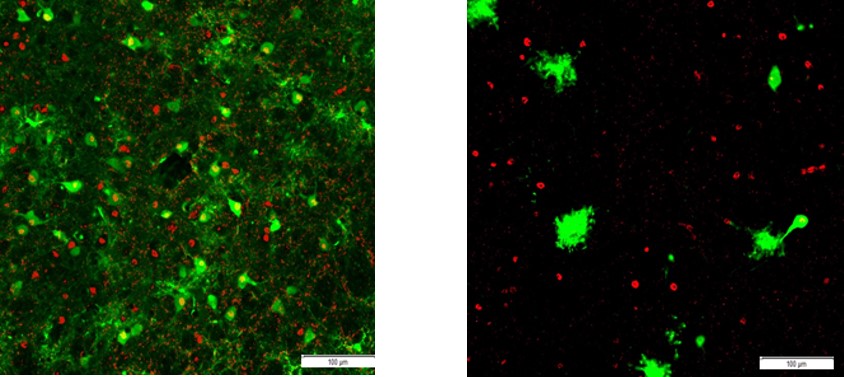Shiga, Japan – April 19, 2022 - Takara Bio Inc., an innovative biotechnology company, announced they have developed a new brain-tropic adeno-associated virus (AAV) vector, CereAAV~{TM}, for gene therapy. CereAAV~{TM}, generated by the combination of the genetic engineering modification of AAV2 and Takara Bio’s unique technique, is successfully shown to be highly brain-tropic. Takara Bio will continue further development to apply this novel technology for clinical use.
In gene therapy, the virus called a vector plays an important role to deliver therapeutic genes into a cell. Among a variety of vectors, AAV vector is widely used in research and has been already utilized in approved gene therapy products because of its high transduction efficiency and persistency. When AAV is used in the gene therapy targeting brain disease, the vector which enables to target specifically brain is needed in order to avoid its accumulation in other organs such as liver which may cause unfavorable adverse events when administered intravenously.
The in vivo studies via intravenous administration showed that CereAAV~{TM} can penetrate the blood-brain barrier~{*} and achieve high transduction efficiency, which were 50-fold increase in mice and 20-fold increase in primates (marmosets) compared to AAV9, demonstrating its ability of being highly brain-tropic. Takara Bio will further develop this new vector, aiming to make it a treatment option for brain disease, including the future possibility of out-licensing it to pharmaceutical companies.
At Takara Bio, next-generation CAR gene therapy products conducting JAK/STAT signal essential for T cells are being actively developed. Preclinical studies have been completed for CD19 JAK/STAT CAR therapy (TBI-2001) and its clinical trial is expected to be started during the fiscal year of 2022. Another JAK/STAT CAR therapy targeting a solid tumor is also under development. In order to put every efforts for these promising projects, the CEA GITR CAR (TBI-2002) project has been terminated. The NY-ESO-1 siTCR~{Ⓡ} (TBI-1301) project is on-going in collaboration with Otsuka Pharmaceutical Co., Ltd. for new drug application.
Throughout its leading biotechnology, Takara Bio is dedicated to continue working on to develop new modalities for ex vivo gene therapy as well as in vivo gene therapy with our novel CereAAV~{TM} and to contribute good health of humankind.
*Blood-brain barrier (BBB) exists between cerebrovascular and cerebral cells to block the transport and exchange of substances. Due to BBB, pharmaceutical products are usually administered directly into brain in surgeries, which places a high burden on patients. There are limitations of viral vectors that can cross through BBB, and AAV9, a type of AAV, has been shown its ability to penetrate into brain and utilized in the treatment of spinal muscular atrophy.
Comparison of transduction efficiency in marmoset brain (thalamus)

Green part indicates fluorescent protein expression by AAV vector administration, and red part indicates nuclear markers of neuronal cells. (Left: CereAAV~{TM}, right: AAV9)
